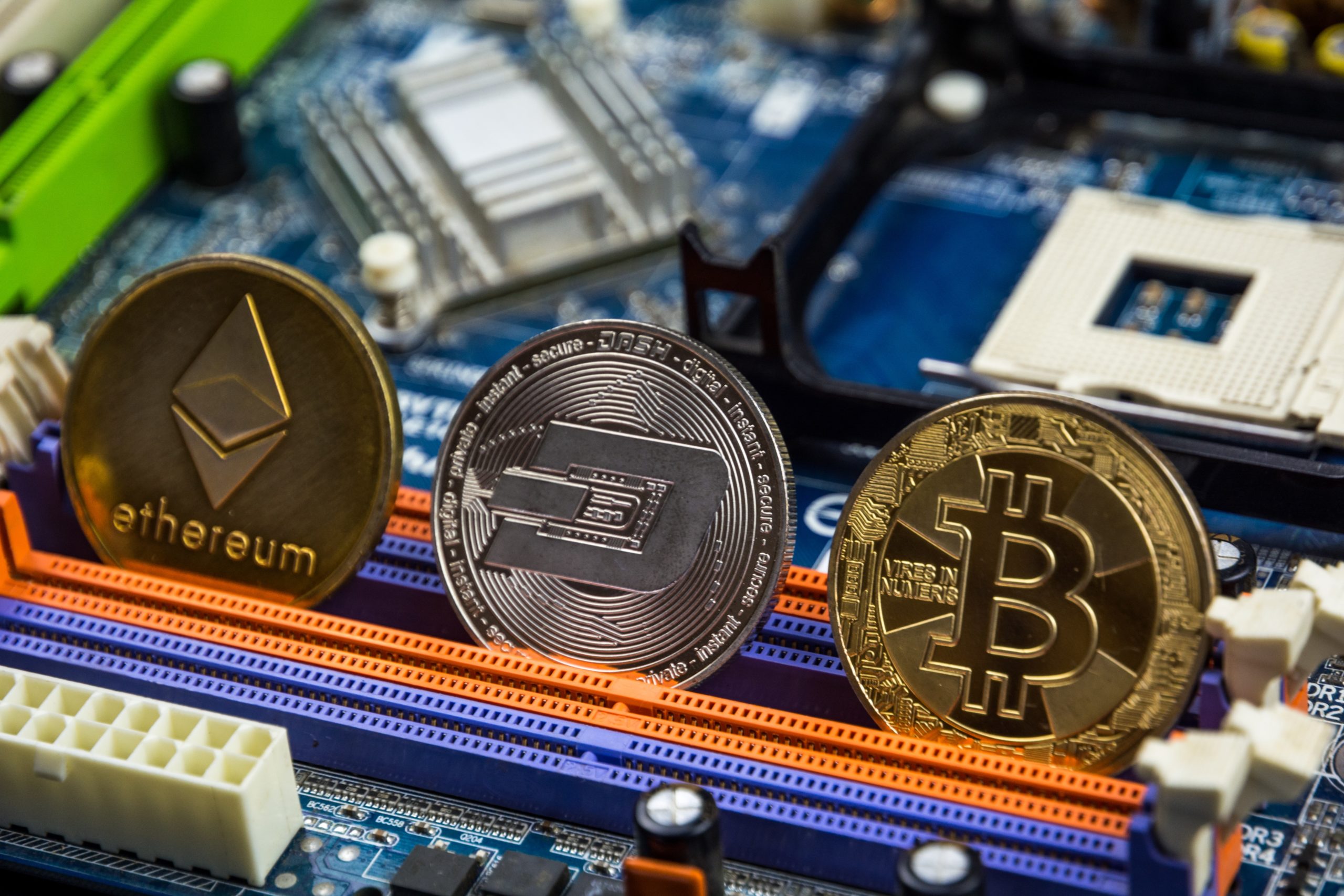
With the launch of Uniswap in 2018, the crypto space changed forever. It became the first decentralised exchange (DEX) to really put automated market maker (AMM) technology on the map, which helped bring about a DeFi boom.
But what is an AMM, and how are DEXs using the technology to disrupt, decentralise and democratise financial trade? Instead of trying to figure it all out ourselves, Stockhead got the lowdown from three experts working in that area of crypto and decentralised finance.
Before we dig in, some top-level bios…
YENWEN FENG is the CEO of Perpetual Protocol (PERP), a decentralised perpetual contract protocol and exchange built on Ethereum and xDai. Feng is a crypto and tech professional with vast experience founding tech start-ups.
HISHAM KHAN is the co-founder and CEO of Aldrin (RIN), a DEX built on Solana and Serum. Khan is an expert in managing and building financial enterprise tech, with an extensive career that includes Bloomberg in New York.
GEORGE HARRAP is co-founder of Step Finance (STEP), a DeFi dashboard-visualisation protocol for Solana and Serum. Harrap is a veteran crypto entrepreneur with experience building crypto exchanges, stablecoin projects and more.
First of all then, what’s a market maker?
HK: It’s is an entity that ensures sufficient liquidity in a financial market. They’re typically done by big firms, such as Citadel, or even the big US banks.
GH: Market makers put up their own funds to add to a pool of money in a market. They operate with the explicit job of making money from people buying and selling from them. Often, they make a spread on the money they provide.
YF: They’re usually companies hired by an exchange to place buy and sell orders in an order book so other traders can trade on it. Generally speaking, market makers use their proprietary algorithms to place their orders so that they can make a market while minimising the risks of losing money.
And what’s an automated market maker (AMM)?
HK: The word “automated” in AMM means that there are no entities that are doing market making – everything is taken care of automatically by code, by smart-contract algorithm.
YF: It’s software on a blockchain that facilitates trades based on a predetermined pricing algorithm. What’s significant about it is that now anyone can be a market maker simply by depositing two [crypto] assets for a single market into an AMM, and the pricing algorithm of an AMM will take over and facilitate trades for each trader.
A small tax fee is charged on behalf of the liquidity providers, i.e. the ones who places two assets in a single market.
Why is liquidity so important to markets and trading?
YF: Liquidity assures the ability to trade assets. Without liquidity, a buyer or seller might have to wait for another trader to match their prices to trade.
GH: It’s so important because without it, nobody can do anything in your market. Without people buying and selling you can’t do anything. A vibrant market is essential for a vibrant product.
HK: Liquidity and volume ensure that buyers and sellers can transact at the agreed upon price with ease and without the need to worry of causing any price impact.

Are AMMs a cut-out-the middleman use case for DeFi?
YF: Yes. AMMs don’t need to have another trader on the other end to complete a trade. Instead, users exchange in a pool of two or more cryptocurrencies that have liquidity added by users, who are also called liquidity providers (LPs).
GH: AMMs are just a different form of market making. But they bring a lower barrier to entry for anyone to provide liquidity and earn a return on it. AMMs make it easier than ever for people to put their money to work.
HK: This new method of exchanging assets embodies the basis of DeFi, crypto and blockchain technology in general. No one entity controls the system, and anyone can build new solutions and participate. Investors are no longer encumbered by high entry-level banking policy requirements, or left at the mercy of intermediaries who make questionable decisions while prioritising incentives.
What else makes AMMs special?
GH: They’re permissionless – meaning you can make a market for anything to anything, no need to ask anyone, and nobody can veto you. They’re decentralised, so they don’t rely on someone with custody of your money. And they make it easy for anyone to earn a return on their capital.
HK: And they reduce fees that are usually given towards the middlemen, making it more profitable and lucrative for all market participants. The gap between the wealthy and less well-to-do is also bridged, as AMMs are equally accessible to anyone with a crypto wallet.
YF: They make the trading of cryptocurrencies seamless. Anyone is able to create their own liquidity pool of two or more different currencies and these pools are traded in a permissionless way, and instantaneously, removing inefficiencies that the traditional financial trading system still holds.
In basic terms, how do AMMs work?
GH: AMMs are like two buckets, each with an equivalent amount of water. If someone pours more water into one bucket and it rises, then some of that water is transferred to the 2nd bucket to keep them balanced. As the token on one side rises or falls, it equivalises with the value of the second token to ensure they’re always in equal measure.
YF: You can also think of it as a literal big swimming pool with red and blue liquids that are deposited by liquidity providers and users trading in that pool are exchanging the red and blue liquids in it.
Basically, someone creates an AMM pool of two different currencies – for example, ETH and AAVE. From there, LPs deposit their ETH and AAVE into the pool. Users then trade between ETH and AAVE in this pool and LPs earn from the gas fees from the trades.
And you might be wondering, what if I want to trade from USDC to AAVE? To do this, you need to use two pools in a single trade, like swapping USDC to ETH on one pool and then swap the newly acquired ETH to AAVE on the other pool.

Are Uniswap and Sushiswap still leading AMM innovation?
GH: Uniswap was the original incarnation of [Ethereum co-founder] Vitalik Buterin’s vision of an AMM. They have done a lot for the space and still produce a top quality product, but there are many more spins on the model now with various enhancements or features, some good… some not so much. Uniswap is always there, working like it always does.
YF: Uniswap and Sushiswap have been innovating in different ways since their genesis. For Uniswap, it’s about the depth – i.e. how to make token-swapping better. They’ve done this with their V3, improving its capital efficiency.
For Sushiswap, it’s about the breadth – i.e. how to create new use cases for the existing token swapping infrastructure, which is why they added margin trading, lending, and token issuance and make all of their services available across multiple blockchains.
What kind of mainstream-adoption barriers do AMMs face?
HK: User experience in the crypto space is still often forgotten. It’s still not easy for users who have zero experience in crypto, or even fintech, to start using crypto products without spending an extensive amount of time learning.
Also, any mistakes a user may make might also directly impact their capital, as crypto applications provide end users with more freedom, which may translate to capital risk.
GH: AMMs are already attracting millions of users, whether that is ‘mainstream’ or not depends how you feel like defining it, but regardless I don’t think AMMs need to actively pursue normies, they’ll come regardless (and already are).
YF: I think the gas cost incurred when interacting with AMMs might be a hindrance, especially on Ethereum. But I believe as scaling solutions gradually mature and side chains/other chains gain traction, we can expect more people to trade with AMMs.
Are you concerned about AMMs facing regulatory roadblocks?
YF: As long as the code is covered by the freedom of expression, the AMM’s smart contracts should have the least regulatory hurdle since the code is run autonomously on the blockchain without human intervention.
However, the parts controlled by centralised entities, such as the domain that the website uses, can face increasing pressure. One example is Uniswap hides a list of tokens on uniswap.org, a domain controlled by the developers. But people can still trade these tokens on the UIs that support Uniswap.
What innovations are you seeing in the AMM/DeFi sector of crypto?
YF: I think we’re witnessing the adoption of AMMs for derivatives. Currently, AMMs are proven effective for spot trading and, somewhat, for perpetual trading. But for other derivative types such as option, volatility, and fixed interest rate, etc, we’re still in the early days and there are different teams trying to solve the puzzles from different angles.
In a sentence or two… why use decentralised finance?
HK: It provides an increase in transparency, and ownership over one’s own assets. This benefit might not seem too apparent in the US, but people in emerging markets know how unstable a financial system can be.
YF: Decentralised finance takes away all the intermediaries in centralised systems, which speeds up processes and reduces cost by not having to pay the middlemen.
Is DeFi an unstoppable revolution at this point?
YF: Yes, DeFi cannot be shut down unless every single computer in the world goes offline at the same time. With its capabilities and potential, it will definitely supersede TradFi.
HK: Yes, albeit with increasing regulatory attention. Consumers realise that financial services need to be disrupted and DeFi proves that it’s possible. I think that regulation will make the industry more mature and we’ll see this technology being integrated into mainstream finance soon.
How would you describe the DeFi opportunity to those unsure?
HK: The financial upside and the experience of having total control over your own capital, and how easy it is to transfer them around the globe, is worth at least dipping your toe in!
YF: DeFi will only get bigger and it will eventually become a part of everyday life. Most TradFi companies are already adopting decentralisation and even online payment services such as PayPal and Amazon are getting onboard. It’s better to embrace it earlier to get a head start before it’s too late.
And how would you describe the DeFi risk?
HK: Price fluctuations, extreme volatility and security incidents are all risks that you need to be aware of. But you should be able to mitigate all of the above to a good extent by spending one to two hours reading about crypto security.
YF: There will always be risks in the financial world. DeFi is portrayed to be riskier because of its volatility, but that’s because it’s a new technology everyone is still processing through. At the cost of risks, comes the transparency of DeFi, where there are no hidden fees or charges.

Tell us about your own AMM project – what makes it unique?
GH: Step is the first AMM on Solana with an atomic router. This means we can transact from one pool to any other pool on the AMM, not just between specific pools. This is a game-changer for usability and liquidity for our users.
We have a farm creator where anyone can make permissionless yield farms on Solana, a first in the space. We also are unique in that half of every pool on Step is denominated in our token, which has a positive feedback loop towards fee generation for stakers, which drives more liquidity to our AMM.
HK: Aldrin’s AMM is the first fully audited AMM on Solana, ensuring buyers, sellers, and liquidity providers can participate in a high-quality platform without the need to worry about hack/security incidents.
Additionally, users can also use many of the smart trading features such as portfolio rebalancing, an essential tool for managing risk, to complement their experience trading in DeFi.
YF: Instead of using an AMM, Perpetual Protocol uses a concept spearheaded by us – the virtual Automated Market Maker (vAMM). A vAMM works similarly to a regular AMM, except that as the name suggests, the liquidity in the AMM is virtual. This means that assets are not exchanged, nor are two sides of an asset pair held in custody by the vAMM. The liquidity is set at the creation of the market and all trades happen in the vAMM.
It makes liquidity provision even easier – users now only need to deposit one asset into an vAMM, which will later mint synthetic/virtual liquidity with that asset as the collateral.
And finally, what made you choose the layer 1 blockchain you’ve built on?
HK: Solana is a high-throughput blockchain that fits the need of a decentralised finance platform. This doesn’t necessarily mean we think other layer 1s are bad, but the technology stack that Solana offers combined with the community engagement and adoption, made us choose the blockchain for our project.
YF: We launched Perpetual Protocol v1 on the xDai [Ethereum-based EVM] chain in December, 2020. At that time, there weren’t many scaling options – most of the roll-ups were still under development. Matic/Polygon was new, and other chains like Solana used a different language than Solidity.
So we went with the xDai chain because it has run for some time and our team members are familiar with it. We like the low fees on the chain and the fact the gas is denominated in a stablecoin also makes it easier to onboard users.
This interview has been lightly edited for clarity. Stockhead has not provided, endorsed or otherwise assumed responsibility for any financial product advice contained in this article.
At the time of writing, the author holds Bitcoin, Ethereum and several other digital assets.
This news is republished from another source. You can check the original article here


Be the first to comment